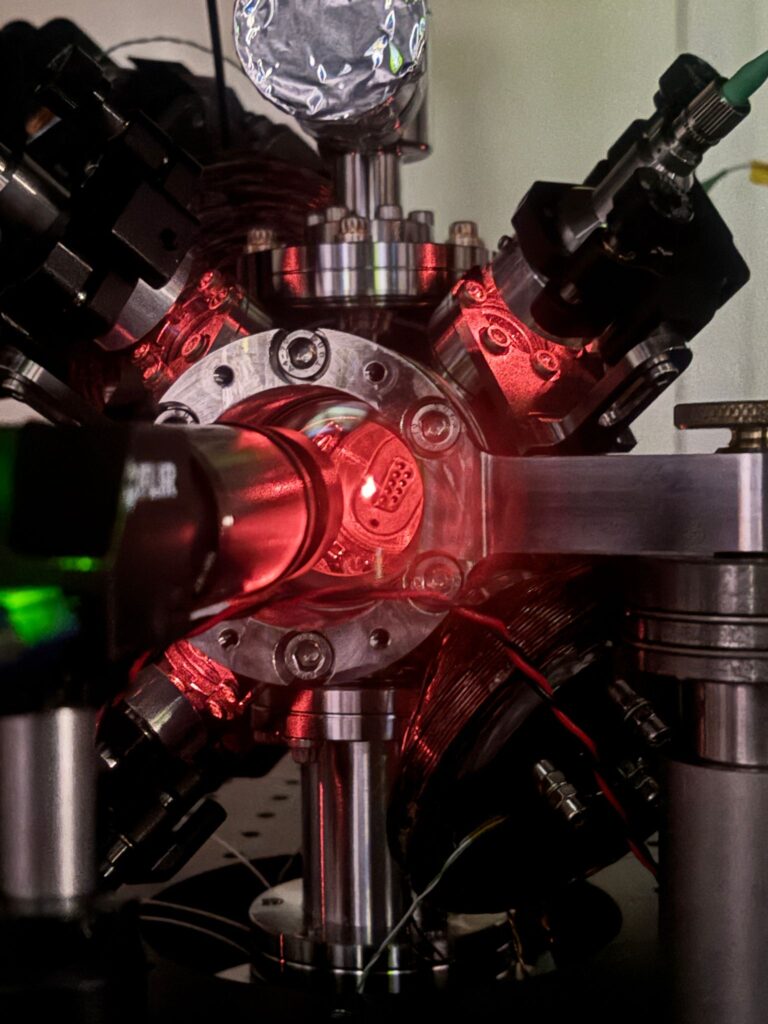Cold atomic ensembles have proven to be a versatile tool for experimental quantum science, due to their long coherence times and the high level of control of their internal and external states enabled through light-matter interactions. Due to the negligible mass of the atomic ensembles, however, gravitational interaction between two ensembles is negligible. At larger mass scales, optomechanical systems, such as mg-scale pendulums, offer a promising route towards sensing faint gravitational couplings, but observing quantum effects in these microscopic objects remains a challenge. By building a hybrid system supporting a light-mediated interaction between an atomic ensemble and a mg-scale pendulum, we hope to:
- Enhance the quantum radiation pressure noise (QRPN) on the pendulum, such that the QRPN exceeds the thermal noise and the pendulum enters a regime dominated by quantum noise.
- Demonstrate a coherent interaction between the atomic ensemble and pendulum using a time-modulated one-axis twisting (OAT) technique, tuned to the mechanical resonance of the pendulum.
- Utilize this coherent interaction to boost the quantum delocalization of the pendulum.


